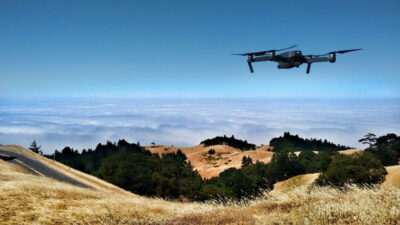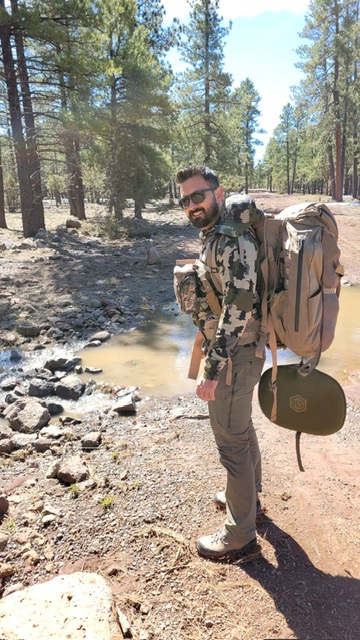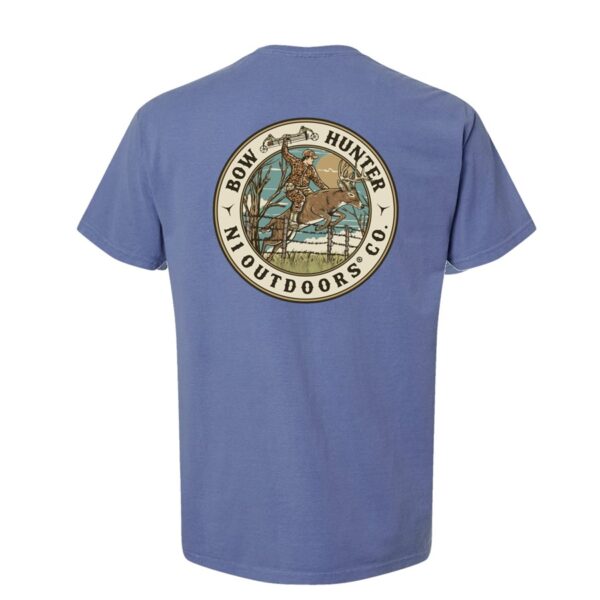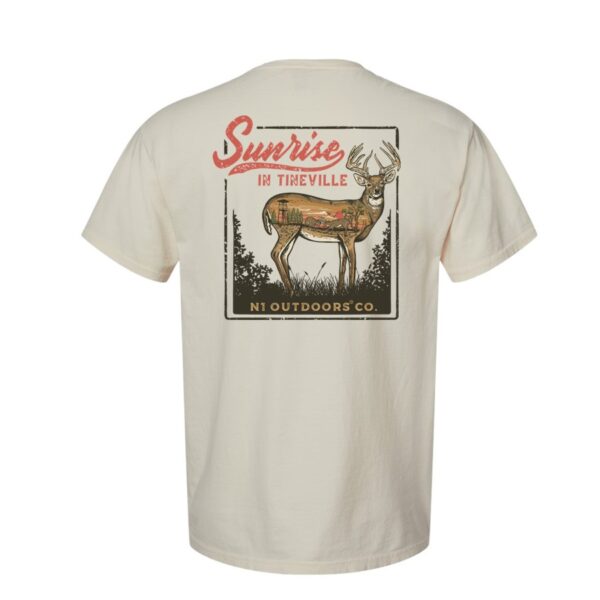Thermal drones for hunting have been gaining traction lately—and it’s easy to see why.
With how far drone tech and thermal imaging have come, hunters in some states now have access to a tool that can seriously shift how they scout, recover, and, sometimes, even hunt game.
While some see this as a groundbreaking step forward, others argue it walks a fine ethical line.
In Arizona, where I hunt, using a thermal drone for hunting is not allowed. Yet, I think about how helpful it would be every season—especially when recovering a wounded animal.
I’ll share some thoughts on the topic based on my experience, explore current regulations, ethical considerations, and why hunters across the country would consider using a thermal drone for hunting.
Let’s break it down.

Drones have increased in popularity with some hunters… here’s why…
Why Hunters Are Using Thermal Drones
- Game Recovery: A thermal drone for hunting is often used after the shot to locate a wounded animal. This tech can detect heat signatures even in thick cover or at night.
- Scouting: Some hunters use drones to identify bedding areas, find possible trails, or view groups of animals from above.
- Predator Control: In certain states, a thermal drone for hunting is allowed for invasive species or predators like coyotes and even hogs.
In my case, I could’ve used one during an August archery hunt. I took a close-range shot on an archery buck—up in a tree at just 15 yards.
The shot hit high and right, and I knew right then that finding this deer would be tough. I spent hours tracking with no luck. Had a thermal drone for hunting been legal in Arizona, that recovery might have gone very differently.
Bowhunting and Archery Shirts from N1 Outdoors
-
N1 Outdoors® Bareback Bowhunter™ Tee
Price range: $28.99 through $32.99 -
N1 Outdoors® Stain The Vanes™ Bowhunting Tee
Price range: $24.99 through $30.99 -
N1 Outdoors® Sunrise In Tineville™ Tee
$18.99
Real-World Advantages of Thermal Drones
- Heat Signatures: Much like their use in law enforcement (think helicopter chases with FLIR cameras), drones with thermal imaging can pick up a heat signature through thick brush or even under snow.
- Quick Recovery: For ethical hunters, fast recovery of an animal increases the chances of salvaging the meat.
- Low-Light Visibility: Drones help overcome low-light challenges at dawn, dusk, or during overcast days.
I remember a police chase video where a suspect hid under a child’s plastic pool. Officers on the ground didn’t see him, but thermal mounted on a helicopter picked him up instantly. The same principle applies to game recovery.
Legal Considerations: Where Are Thermal Drones Legal?

You must do your due diligence and research state and local regulations before considering buying a drone for hunting. Understanding local laws is critical, as a thermal drone for hunting might be legal in one state and banned in another.
Common State-Level Restrictions:
- Arizona: Arizona Game and Fish does not allow the use of drones (thermal or not) to hunt or recover an animal.
- Colorado & Alaska: Similarly, drones are not permitted for hunting to preserve fair chase ethics.
- Texas: Allows drone use for certain invasive species but requires a permit.
Always check with your local game and fish department regarding the use of drones. Regulations can shift, especially with rapid tech innovation.
To learn more about regulations, the U.S. Fish & Wildlife Service offers helpful resources on federal-level hunting laws. At the same time, the Arizona Game and Fish Department provides detailed guidelines for residents like me.
Ethical Concerns: Do Drones Undermine the Hunt?
Many hunters argue that using a thermal drone for hunting crosses an ethical line.
- Fair Chase: Traditionalists believe hunting should remain a ground-level sport that involves tracking, scouting, and skill.
- Overreliance on Tech: The concern is that as gear becomes more advanced, the skill element of hunting gets diluted.
- Slippery Slope: Just as trail cameras became heavily used (and ultimately banned in Arizona), drones may follow a similar pattern.
I’ll be honest—when Arizona banned trail cameras, I wasn’t too upset. On one trip, we hiked deep into a canyon to find a water hole we thought was too remote for others. We found five trail cameras already set up. It felt like a technological arms race, not a hunt.
When Would I Use a Thermal Drone?
I wouldn’t use a thermal drone for hunting during the actual pursuit of an animal. I prefer to keep things challenging and traditional—spot and stalk, tracking signs, and glassing—because that’s what I love most about hunting. However, I might consider one strictly for recovery if it were legal.
I’d also consider using a thermal drone in a survival situation. It could help locate animals and water sources or enhance home security on large rural properties. But, for now, I’m content doing things the traditional way.
What I Would Look for in a Thermal Drone
Key features if you’re considering purchasing a thermal drone for hunting and only after checking your local regulations:
- High Thermal Resolution: Better target identification.
- Flight Time: 30 minutes or more is ideal – with a spare battery pack and mobile charger.
- Range: Look for at least 1.5 to 2 miles.
- Durability: Weatherproof and field-ready.
- Ease of Use: Simple interface and reliability in the field.
Companies like DJI Enterprise and Autel Robotics are leading the way in drone and thermal imaging technologies.
Hunting With Drones: Is the Future Already Here?
The topic of using a thermal drone for hunting is controversial and evolving.
While I don’t currently use one due to legal restrictions in Arizona, I understand why others do.
These tools can be a massive advantage for ethical recovery and wildlife management. However, they must be used responsibly and within the boundaries of the law.
What are your thoughts on thermal drones for hunting?

Tom Guzman is the founder of Trophy Pursuit ( https://trophypursuit.net/ ), a blog focused on hunting, backcountry preparedness, and outdoor gear. With a background as a Marketing Director and expertise in SEO, he combines field experience with digital strategy to deliver practical, well-researched content for hunters and outdoor enthusiasts.





